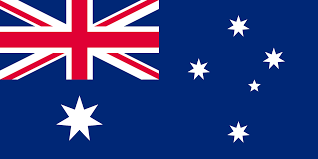Australia comprises a land area of about 7.682 million square kilometres and is the planet's sixth largest country after Russia, Canada, China, the United States of America and Brazil. It is also the only one of these six nations that is completely surrounded by water. A federation of six states, with ten federal territories, Australia boasts a stable, culturally diverse and democratic society. Its population includes its Indigenous people who arrived more than 50,000 years ago, and settlers from countries all around the world. Nowadays the country has a population of 24.22 Million (Sept 2016 estimate), comprising of a number of ethnicities, mainly of European origin. Australia’s major cities include Sydney (4.505 million), Melbourne (4.203 million), Brisbane (2.202 million), Perth (1.861 million), Adelaide (1.256 million) and the capital Canberra (423,000). Displaying an overall population density among the lowest in the world, Australia’s vast territory is mainly uninhabited, with the majority of the population and its economic activity concentrated in and around the big cities of the eastern and south-eastern coast.

Source: Australian Bureau of Statistics
Immigration is an important feature of Australian society. Since 1945, over six million people from 200 countries have come to Australia, as new settlers. Migrants have made a major contribution to shaping modern Australia. People born overseas make up almost one quarter of the total population. In recent years, the federal government employs a scheme of specific immigration intake numbers on a yearly basis. Australia’s immigration policies are non-discriminatory and all applicants to migrate, must meet the same selection criteria.
Due to the large area and the latitudinal range from north to south of the Australian island continent, the climate varies enormously. The seasonal average temperature fluctuations can also be considerable, ranging annually from 28oC along the north-western coast to 4oC in the alpine areas in the south-east. Winter temperatures are at their lowest in July across the country and the warmest month is January or February in the south and December in the north. Australia’s inland has one of the lowest rainfalls in the world and about three-quarters of the land is arid or semi-arid. Nonetheless, its fertile areas support a thriving agriculture, exporting wheat and livestock around the world.
Australia’s abundant physical resources allowed a high standard of living since the nineteenth century. The country is a major exporter of minerals such as iron-ore and gold, and energy in the form of liquefied natural gas and coal.
The last two decades, Australia exhibited a fairly good economic performance, while simultaneously it performed significant structural socio-economic changes that created an open, stable and innovative economic environment. Australia displays consistent good rankings against a number of indicators: the country is ranked in the world’s top 10 most liveable countries, and its biggest city, Sydney, in the top 10 most liveable cities in the world, respectively. It is among the most popular international student destinations worldwide (3rd) and has 5 of the top 40 cities for urban transport. Further, with respect to the UN’s Human Development Index (HDI), a summary measure of average achievement in key dimensions of human development, i.e. a long and healthy life, being knowledgeable and have a decent standard of living, Australia ranks 2nd, with an HDI score of 0.939, for 2015. With more than 20 years of continued stable economic growth, and an AAA ranking, Australia is considered one of the best performing economies in the world by the top credit rating agencies, such as Moodys, Fitch and Standard & Poors.
Australia is a member of the following international organisations: the Commonwealth Nations, the United Nations (UN), the World Trade Organization (WTO), the G20, the International Monetary Fund (IMF), MIKTA (an informal partnership between Mexico, Indonesia, Republic of Korea, Turkey and Australia), the Asian Infrastructure Investment Bank, the World Bank Group, the Asian Development Bank and the OECD (Organisation for Economic Co-operation and Development).

